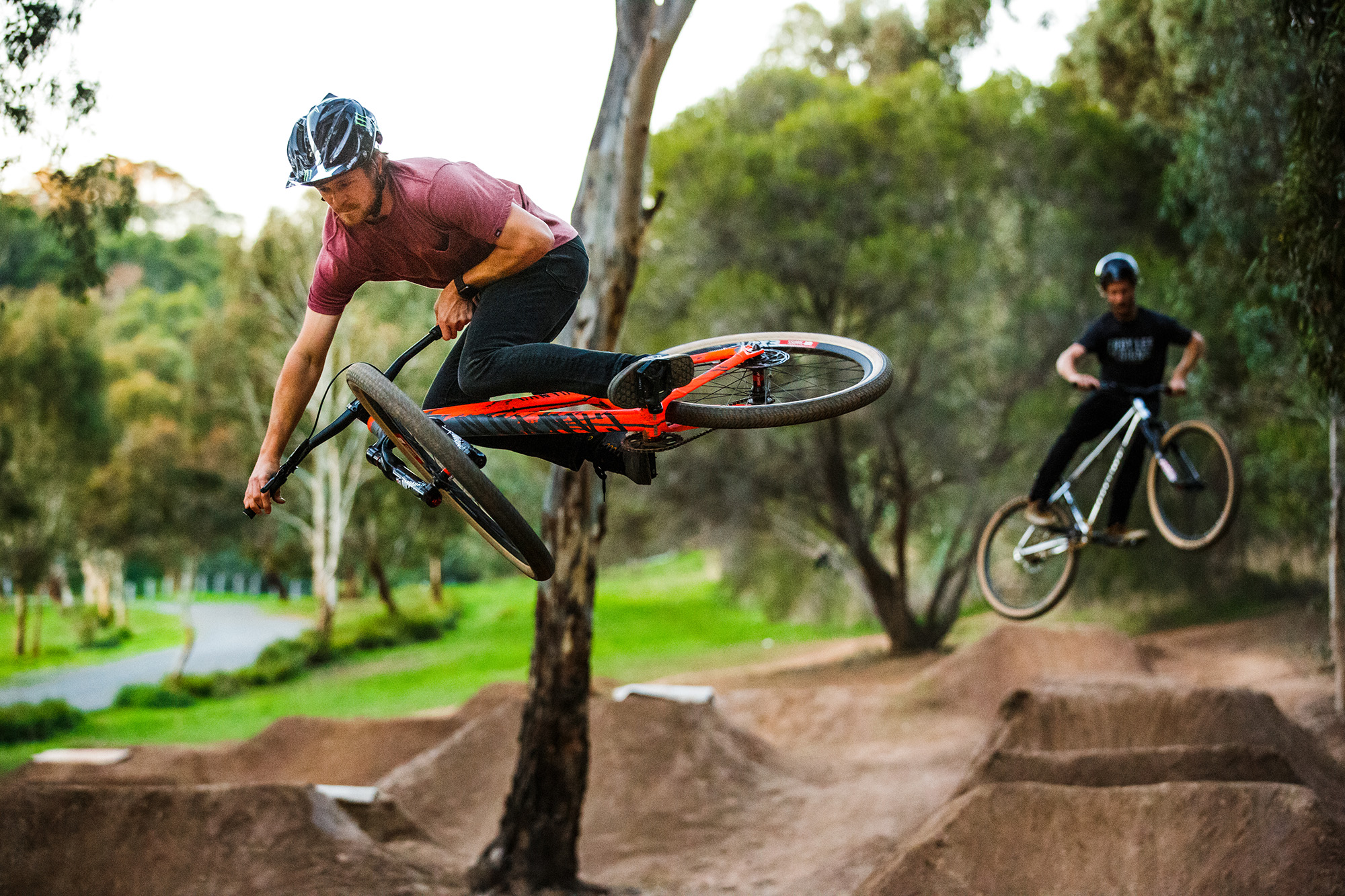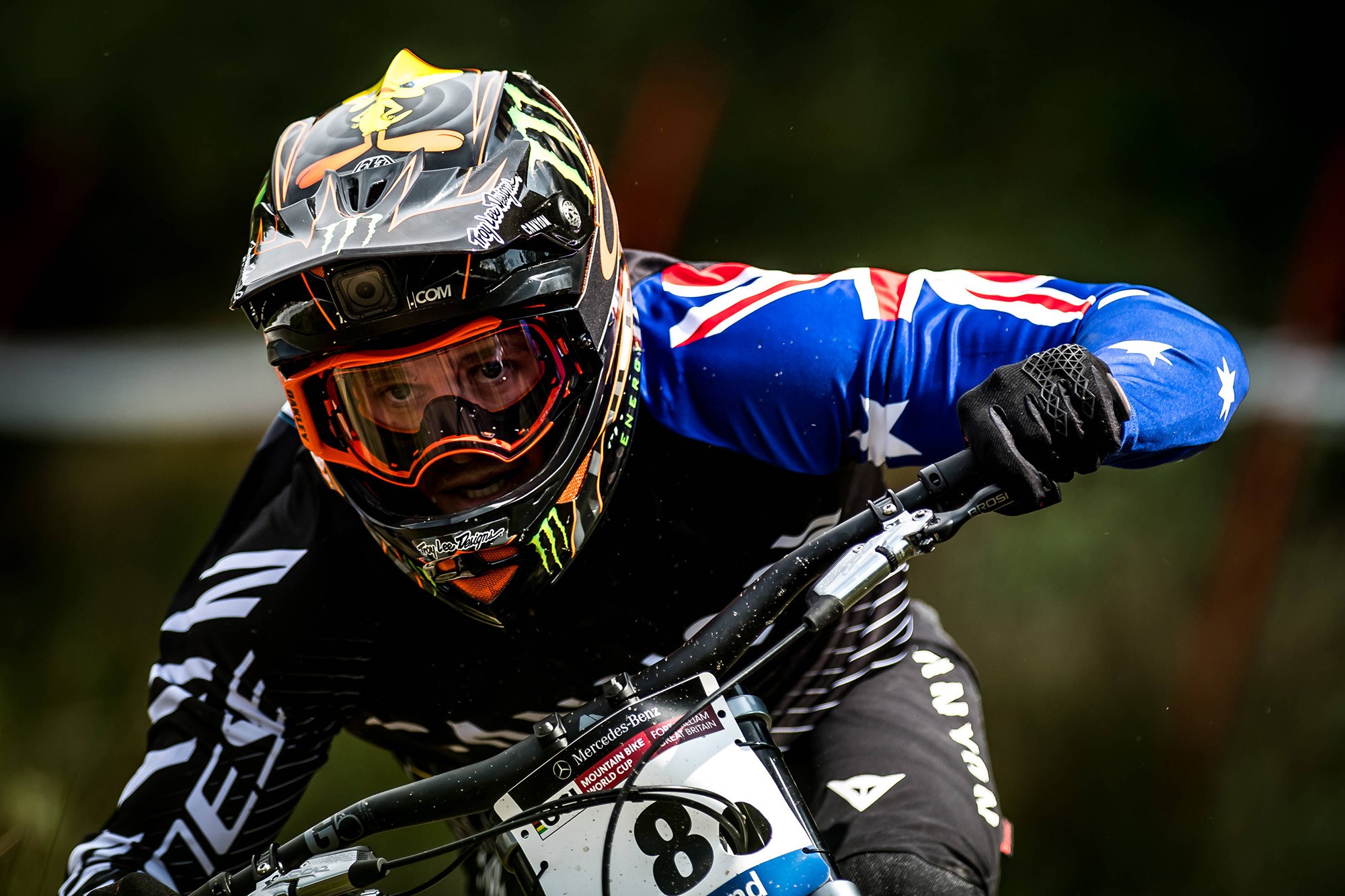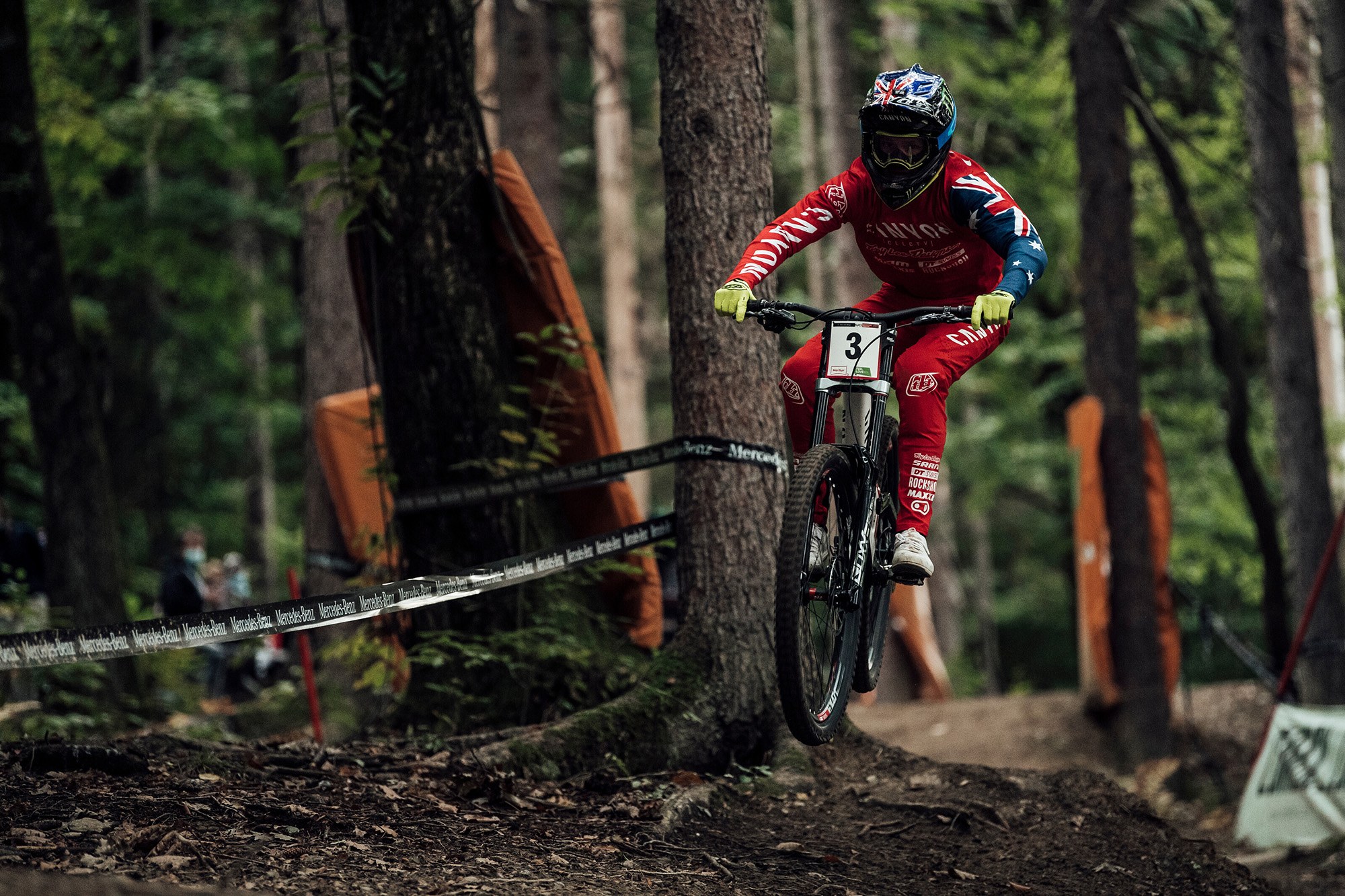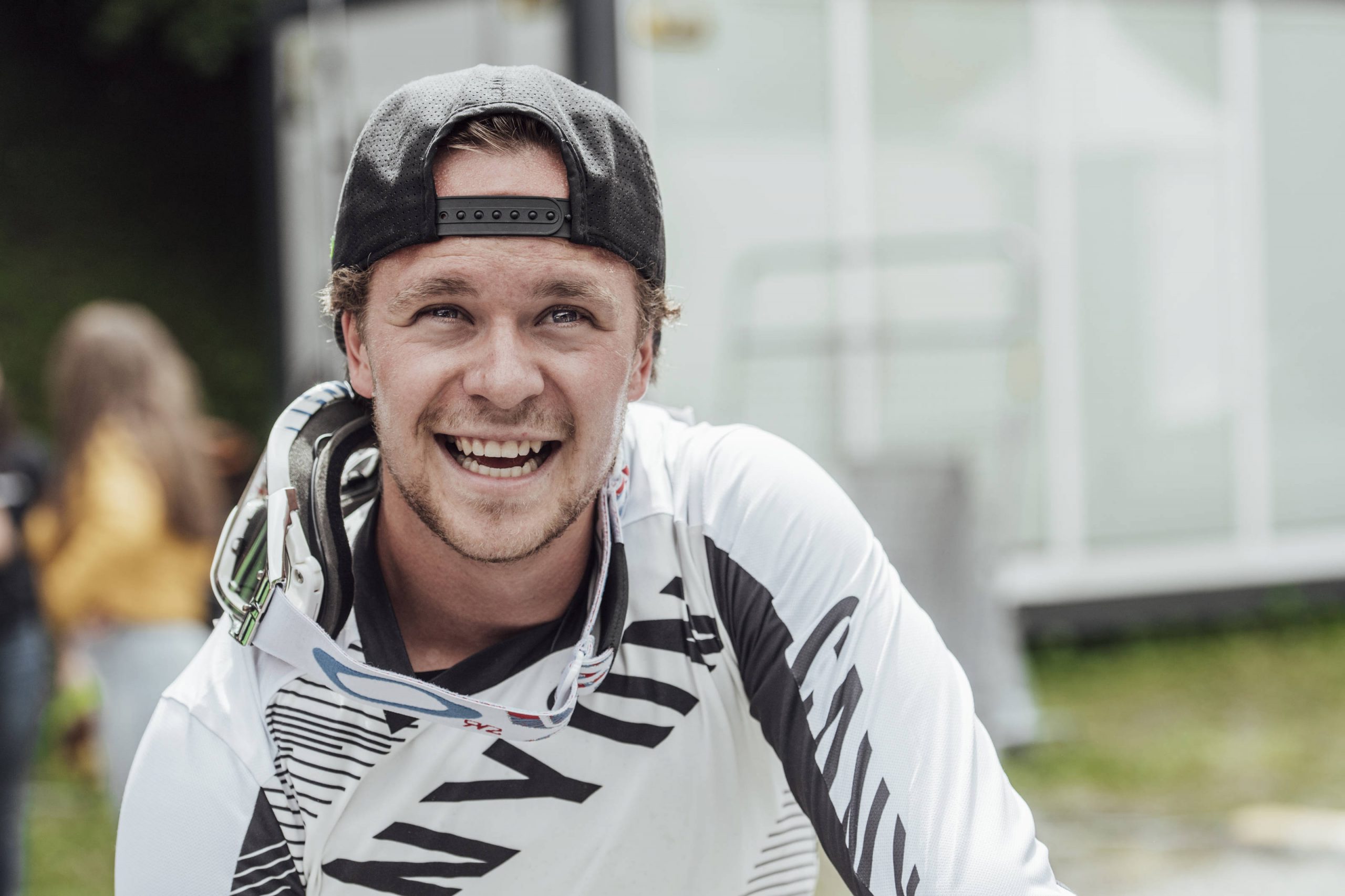With mountain bike technology across the board having reached such heights, bike manufactures have to look beyond simply putting nice parts on a bike in order for their riders to win races. For the most part today, in the elite ranks of MTB racing it really is all about the ‘rider’ versus being all about the bike that the rider is on.
The level of training in the elite field has increased over the years, also bringing in speciality coaches dedicated to the demands of MTB. Even looking back 5 years, the understanding of training, both physically and mentally, was much less than it is today. Like technology, this training and race mentality has trickled down into the masses, even the weekend warriors are now training hard for the local series trophy.
Training as hard as a pro is near impossible as it involves a lot of time to go to the gym, rest adequately, and also ride your bike. Training, however, will not only improve your riding, it is a crucial ingredient for preventing injury, maintaining mental health, and also breaking up riding to avoid burnout. You will be able to brace harder and hit rough sections of trail with more confidence because your body will be able hold and your eyes and brain will be able to process thinks much easier at speed. There is no loss to training smart, but, if you train too hard, things can make a hard U-turn. So how do we manage that balance while working a 9-5 job and everyday life?
I have always been curious wondering if a ‘regular Joe’ like myself took on a similar training schedule as a top-level pro racer, given enough time to build up could I effectively train myself to become a World Cup level rider?
In this article, I finally set off on the quest to theoretically find an answer to that question. To begin putting the pieces of the puzzle together, Troy Brosnan agreed to open up, and he provided a stack of valuable insight into his training regime, both physical and mental.
Now, it goes without saying that Troy’s day job is literally being a professional mountain biker. He wakes up in the morning and spends all day dedicated to working his ass off to perfect his craft and build his body to the peak of physical and mental conditioning.
What if I applied myself in the same way, might it be possible for someone like me that works a ‘regular 9-5’ job? Could I find a way to cram in on top a similar training load as Troy, and still have a chance to build my skills, strength and speed all the way up to World Cup level?
In addition to all of the information that Troy shared with me, I then reached out to one of the MTB’s most elite strength and conditioning coaches, Ben Plenge, from Strength Factory over in the UK.
Okay, so let’s get going and start by having a look at Troy’s training routines, with some input from Ben as a coach. Athletes like Troy train at different intensity levels, called ‘blocks’, dependant on the time of year and individual ‘key’ races that they aim to ‘peak’ for. Let’s begin by taking a look at Troy’s schedule for one of those ‘peak’ training weeks. “A week for me will consist of 3 gym sessions, two trail rides, one to two Downhill days and a possible Moto or BMX track ride in there also. Doesn’t sound like much but it gets busy!” Imagine trying to fit that in while you hold down a nine to five throughout the week.
 When asked about the variety of training and what he focuses on Troy says,
When asked about the variety of training and what he focuses on Troy says,
“To be honest, I do try really hard to overeat and get bigger, I have always been light and have found it hard to ‘Put on Weight’. So, I guess that’s just not the direction I should go in. So, I just get the explosive power down, and that really helps my riding the most.”
Obviously, this has so many variables because it involves people. I asked Ben how he focuses an athlete’s goals and adjusts accordingly. “The focus is led by the athlete’s needs as an individual and also the time of year. Some athletes are naturally very strong, and we just top it up, whereas others need a lot of work to maintain and build strength with the volume of riding they do. In the winter months, we will focus more heavily on building general strength and robustness, and things generally shift towards plyometric and power work as the season approaches.” This is where the balancing act of time, availability to ride, and goals come into play.
However, it isn’t just our mere mortals that struggle with this balance as even Troy can find it hard to keep bike skills in tune while in peak intensity training. “It still remains a bit of a problem for me. Because you can only get stronger in the gym and you can only get better skilled, or bike fit on a bike. So sometimes you have to lay off of one thing and focus on the other to really make some gains…! That balance is definitely tricky.” When asked about a 9-5 worker trying to achieve balance and the constraints they have, Ben says
“Time and energy for sure. Also, men in their 30’s to ’50s often have unrealistic expectations of what they are capable of and what they should be doing. I always say that ‘something is better than nothing’ so basically any training is beneficial. What to focus on is determined by that person’s needs, but for most 9-5 folk, getting in the gym and moving is very helpful, along with mobility training to reverse all the sitting. Also, we don’t have to choose one. Time usually determines what can and can’t be done. You can probably hit the gym in your lunch break but probably can’t hit the trails.”
 Even the best jobs in the world can be tough, and there must be days when pro athletes get bored. As well riding a variety of bikes can only be a benefit, Troy says “I love to use road riding as a high training source for my training, it is incredible cardio fitness and also has very direct results. If you want to smash out sprints or just go for long rides, the power meter doesn’t lie. Also, the road riding scene in Adelaide is pretty amazing with our coastal roads and epic hills. I also have an e-Bike, but I use that mainly to run the dogs and keep them fit!!” However, Ben does say, “it depends on the character. Some don’t care about diversity as long as they get results in training and racing. Others need more variety and stimulation to remain engaged. It is about getting to know the rider and what makes them tick”. Troy also loves riding a bit of moto-x and comments, “moto seems to be a very different type of riding than an MTB for me, I’m not that good.. haha! But I tend to use it to just have fun and also its damn hard work..! Doing 30min moto’s takes it out of you and it’s great for training to not get arm pump!”
Even the best jobs in the world can be tough, and there must be days when pro athletes get bored. As well riding a variety of bikes can only be a benefit, Troy says “I love to use road riding as a high training source for my training, it is incredible cardio fitness and also has very direct results. If you want to smash out sprints or just go for long rides, the power meter doesn’t lie. Also, the road riding scene in Adelaide is pretty amazing with our coastal roads and epic hills. I also have an e-Bike, but I use that mainly to run the dogs and keep them fit!!” However, Ben does say, “it depends on the character. Some don’t care about diversity as long as they get results in training and racing. Others need more variety and stimulation to remain engaged. It is about getting to know the rider and what makes them tick”. Troy also loves riding a bit of moto-x and comments, “moto seems to be a very different type of riding than an MTB for me, I’m not that good.. haha! But I tend to use it to just have fun and also its damn hard work..! Doing 30min moto’s takes it out of you and it’s great for training to not get arm pump!”
Now as much as we love going fast and more often than not, we live by a ‘we can sleep when we die attitude’. However, rest is an essential part of the training, and even Troy says, “rest has been a pretty hard one for me, I have had years where I have over-rested and wasn’t fit enough and then others that I just felt so drained throughout the whole year! I have found that if I listen to my body and rest. If I’m not feeling like training, either in the gym or riding, I will take some time off. A decent rest lets me come back the next day or two and keep smashing out the training with better results. Ben notes that when it comes to rest and recover that “sleep is the best rest, regardless of what job you do. Aim for 8-9 hours per night.” Also, he adds this about trends in recovery and gimmicks.
“The best recovery methods are proper nutrition, good hydration and plenty of quality sleep. Muscle stim, massage guns, compression and all the other commercially available recovery aids are icing on the cake. They do often work, and they can improve recovery, but if your food, drink and sleep are off, then you are wasting your time and money on the other stuff. Master the basics first!”
What happens when you get fatigued, down, or over the training, everyone has those moments they just want to pack it in. Troy notes, “I believe everything happens for a reason, so I try pretty hard not to get down, it will always get better at some stage. So sometimes you just have to accept the grind and the hard times to be able to enjoy the good times. I also think having good and positive people around you helps keep you on a level line instead of going up and down”. When it comes to managing fatigue and managing injuries, Ben says “As always, it is about the athlete’s wellbeing first and foremost. Injuries, their emotions, and general health determine what we do and how hard we go. This is part of the ‘art’ of coaching where you learn to read an athlete’s face, body language and energy at the start of a session”. And if unfortunately, the athlete is struggling to find motivation for the day “Not really. If they don’t want to train, then there are bigger fish to fry. I would probably get them to come to the gym anyway for some chilled mobility and foam rolling and a good chat to get to the bottom of whatever is going on. Or maybe just go grab a coffee “.
 Now, even though Troy has been at the top of his game, he still needs a trainer to meticulously work on his programs to ensure that he’s improving and peaking at just the right times. When chatting about his trainer, he mentioned, “Dave, my trainer, plays a big role. We have had a very long relationship before working together in this way. The tight relationship between us helps him to know when to push me and when to ease off the training. We will program out our months and work together to make something I like to an extent. It is essential to still be able to have fun as that’s my main thing!” And even though Troy may know a lot about training by now, He says” Dave’s knowledge is very, very important as you can see I have had minimal injuries and have been inside the top 3 overall for the last 6 years in a row. We train to get fit and strong but also a lot to do with injury prevention. This was something I was a little confused on when we first started but now would not change it in any way!”
Now, even though Troy has been at the top of his game, he still needs a trainer to meticulously work on his programs to ensure that he’s improving and peaking at just the right times. When chatting about his trainer, he mentioned, “Dave, my trainer, plays a big role. We have had a very long relationship before working together in this way. The tight relationship between us helps him to know when to push me and when to ease off the training. We will program out our months and work together to make something I like to an extent. It is essential to still be able to have fun as that’s my main thing!” And even though Troy may know a lot about training by now, He says” Dave’s knowledge is very, very important as you can see I have had minimal injuries and have been inside the top 3 overall for the last 6 years in a row. We train to get fit and strong but also a lot to do with injury prevention. This was something I was a little confused on when we first started but now would not change it in any way!”
While all of this is perfect in theory how would I go applying it to my life?
My job in a bike shop is nowhere near as physical as a bricky or builder but, just the mental stress of knowing my way around BB standards can be tiring enough. Going to the gym after being on the limiter at work for 8-10 hours can be one of the hardest things to find motivation for. Let’s not even get started on managing nutrition while struggling to find a lunch break on a busy day.
Outside of work, there is an importance for people to maintain personal relationships, family time, and keeping the house from looking like a brothel. Looking at a heavy “training” week in summer for me is something like; up at five for training at 6am, working 8-5, a ride at 6, home at 8, dinner at 8:30, then foam rolling while working on my podcast and articles for [R]evo until ten. While I am only training 3-4 times a week, when I am in the gym, I often like to go way too hard and I am often so fatigued for a Sunday shred session. The time to rest just isn’t there, and to think I DON’T EVEN HAVE KIDS in my life!!
A top-level athlete will often have to be selfish to maintain their position at the top. While they are surrounded by a team, they are the one who has to put in the work. The stresses that puts on everyday life can be phenomenal and one of the toughest parts of wanting to be at the pointy end of a race weekend. I’d say even Sam Hill, a known committed family man, would likely even find struggles in this aspect of the sport.
This is why balance is the real complexity of training as your average joe. The scales are tilted in a pro athlete’s favour, with more time to rest, recover, and integrate life around them. Because we as punters have more things on one side of the scales, we need to adjust the size of things like training and riding on the other side of the scale. Burning out for the sake of getting third in expert class for your local series may not be the best when others rely on what you do for the rest of the time. It is essential to not lose sight of the joy riding brings you and how you go about that is key to a sustainable love for the sport. So, don’t feel bad if you miss a gym or interval session because you went out for tea with your mates. But, if you want to train hard, it is important to train smart and not go hard 100% of the time. Remember, even Troy Needs to have a break occasionally, and he is one of the fittest riders in the world. [R]









